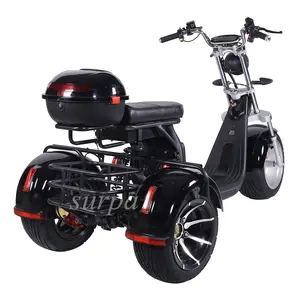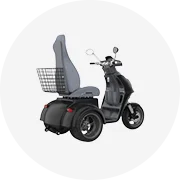Types of Army Truck 6x6
Military 6x6 trucks are versatile vehicles designed to operate in demanding conditions across various terrains. Each type serves specific operational purposes within military logistics and tactical operations. Here's a comprehensive breakdown of the main categories:
Cargo Trucks
The backbone of military logistics, these trucks transport troops and supplies through challenging terrains. They feature customizable configurations with flatbeds, boxes, or bed bodies for cargo transport.
Key features: Integrated crane lifting systems, modular cargo areas, all-terrain capability
Armored Trucks
These 6x6 military vehicles provide ballistic protection against small arms fire and explosive devices. With reinforced chassis and armored compartments, they safeguard personnel and critical supplies in high-threat environments.
Key features: Bulletproof glass, blast-resistant undercarriage, armored crew compartments
Recovery Trucks
Specialized for battlefield vehicle retrieval and repair operations. These trucks carry equipment necessary to recover disabled vehicles from challenging terrain and perform field repairs.
Key features: Heavy-duty winches, hydraulic cranes, comprehensive tool storage
| Truck Type | Primary Function | Special Features | Operational Environment |
|---|---|---|---|
| Tanker Trucks | Fuel transport and distribution | Specialized tanks, pumping systems, fire suppression | Supply routes, forward operating bases |
| Utility Trucks | Versatile support operations | Customizable configurations, communication equipment | Command posts, field operations |
| Tractor Trucks | Heavy equipment towing | Fifth-wheel coupling, high torque engines | Artillery transport, heavy equipment movement |
| Personnel Carriers | Troop transport in hostile environments | Troop compartments, weapon mounts, communication systems | Combat zones, tactical deployments |
Military Insight: Many modern 6x6 military vehicles feature modular designs that allow rapid reconfiguration between different operational roles, maximizing versatility and deployment efficiency in the field.
Specifications and Maintenance of Army Truck 6x6
Understanding the technical specifications and maintenance requirements of army truck 6x6 vehicles is essential for optimal performance and operational longevity in military applications.
Key Technical Specifications
Engine
Typically 6-10 liter diesel engines with high torque output (400-700 hp). Advanced cooling systems enable operation in extreme temperature environments from -40°C to +50°C.
Transmission
Robust manual transmissions with 5-10 synchronized gears. Features include power take-off capabilities and transfer cases for optimal power distribution across all wheels.
Suspension
Independent front suspension with solid rear axles. Heavy-duty shock absorbers and progressive-rate springs provide stability under variable load conditions.
Braking System
Dual-circuit hydraulic disc brakes with ABS capability. Secondary air-brake systems and engine braking for enhanced control during steep descents.
Tires & Mobility
Run-flat capable radial tires (335/80 R20 typical) with aggressive tread patterns. Central tire inflation systems allow pressure adjustment while in motion.
Performance Metrics
Top speed: 50-65 mph (80-105 km/h)
Range: 500-800 km on single fuel load
Fording depth: 0.9-1.5 meters without preparation
Comprehensive Maintenance Requirements
Regular maintenance is critical to ensuring operational readiness and extending service life of military 6x6 trucks. Below is a structured maintenance protocol:
| Maintenance Area | Tasks | Frequency | Critical Checks |
|---|---|---|---|
| Engine System | Oil changes, filter replacement, coolant checks | Every 250-300 operational hours | Fuel injector performance, exhaust integrity |
| Transmission/Drivetrain | Fluid level monitoring, gear oil replacement | 500 operational hours | Transfer case operation, differential performance |
| Suspension & Chassis | Shock inspection, bushing lubrication | Quarterly | Frame integrity, torsion resistance |
| Braking System | Pad inspection, fluid replacement | Monthly checks, annual fluid change | Air pressure in backup systems, brake balance |
| Electrical Systems | Battery maintenance, connection cleaning | Bi-weekly in field operations | Alternator output, starter performance |
| Tire Management | Pressure checks, tread inspection | Before each mission | Sidewall integrity, valve stem condition |
Critical Maintenance Warning: After water fording operations, immediate drivetrain inspection is mandatory. Water contamination in differentials can cause catastrophic failure within 50-100 operational hours if left unchecked.
How to Choose Army Truck 6x6
Selecting the appropriate 6x6 military vehicle requires careful consideration of operational requirements, terrain conditions, and specific mission parameters. This comprehensive selection guide addresses key factors for procurement decision-makers.
Operational Purpose Assessment
The primary mission role should dictate vehicle selection. Different models excel in specific applications such as logistics support, troop transport, or recovery operations.
Selection tip: Match vehicle capabilities precisely to mission requirements rather than over-specifying
Manufacturer & Parts Support
Consider the manufacturer's reputation, production history, and global parts availability. Established military vehicle manufacturers offer better long-term support and standardized components.
Selection tip: Prioritize commonality with existing fleet for maintenance efficiency
Critical Selection Factors
| Selection Factor | Assessment Criteria | Operational Impact |
|---|---|---|
| Engine Performance | Evaluate torque output, fuel efficiency, and multi-fuel capability | Determines operational range, load capacity, and terrain capability |
| Transmission System | Manual vs. automatic, number of gears, transfer case design | Affects operator training requirements and off-road performance |
| Suspension & Mobility | Ground clearance, approach/departure angles, articulation range | Defines passable terrain types and obstacle navigation capability |
| Payload Capacity | Maximum load rating, cargo area dimensions, weight distribution | Determines logistics capacity and mission capability |
| Protection Level | Armor rating, blast protection, integrated countermeasures | Defines operational envelope in threat environments |
| Environmental Rating | Temperature range, dust resistance, water fording depth | Establishes deployment limitations in extreme environments |
Procurement Insight: When evaluating 6x6 trucks for sale, consider the total lifecycle cost rather than initial purchase price. Higher acquisition costs often translate to lower operational expenses through reduced maintenance needs and better fuel efficiency.
Customization Considerations
Modern military 6x6 vehicles often offer significant customization options to meet specific operational requirements:
- Communications Systems: Consider integration capabilities with existing tactical networks and command systems
- Power Generation: Evaluate auxiliary power outputs for supporting mission equipment
- Weapon Mounts: Assess options for defensive armaments and integration with remote weapon stations
- NBC Protection: Consider requirements for nuclear, biological, and chemical threat environments
- Recovery Equipment: Evaluate winch capacities, towing capabilities, and self-recovery systems
How to DIY and Replace Army Truck 6x6 Parts
While professional mechanical expertise is recommended for major repairs, many maintenance and replacement operations can be performed by trained personnel with proper guidance. This section provides a structured approach to DIY maintenance and parts replacement for army truck 6x6 vehicles.
Safety Warning: Always follow proper safety protocols when working on military vehicles. Use appropriate personal protective equipment, secure the vehicle properly, and never work under a vehicle supported only by a jack.
Systematic Replacement Process
Pre-Replacement Assessment
Thoroughly inspect the vehicle to identify all components requiring replacement. Create a comprehensive parts list and verify availability before beginning work. Use diagnostic equipment when applicable to confirm electronic system faults.
Tool and Documentation Preparation
Gather all required tools, including specialized equipment for military vehicles. Obtain the manufacturer's service manual and technical bulletins relevant to the specific components. Prepare a clean, well-lit workspace with adequate ventilation.
Vehicle Preparation
Position the vehicle on level ground and engage parking brakes. Disconnect the main battery to prevent electrical hazards. Place wheel chocks and use proper lifting equipment rated for military vehicle weight. Allow hot components to cool completely before beginning work.
Component Access and Removal
Follow the service manual's specific disassembly sequence. Document the position of components and connectors using photographs or diagrams. Label all electrical connections and hoses before disconnection. Retain all fasteners in labeled containers.
Component Replacement
Verify replacement parts match original specifications. Clean all mating surfaces thoroughly before installation. Apply appropriate lubricants and sealants as specified in the service manual. Use a calibrated torque wrench to ensure proper fastener tightening.
System Testing
Reconnect the battery and perform initial operational checks before full reassembly. Verify fluid levels and system pressures meet specifications. Test electrical systems for proper function. Make adjustments as necessary according to service manual procedures.
Final Assembly and Verification
Complete reassembly following the reverse order of disassembly. Verify all connections are secure and components properly mounted. Perform a comprehensive systems check and test drive the vehicle to confirm proper operation.
Documentation and Maintenance Records
Record all maintenance performed, parts replaced, and any adjustments made. Update the vehicle's maintenance log with date, mileage, and service details. Schedule follow-up inspections to verify proper operation of replaced components.
Maintenance Tip: When replacing critical drivetrain components on 6x6 truck military vehicles, always test operation at low speed in a controlled environment before returning to full service. This allows detection of installation issues before they become critical failures.
Frequently Asked Questions
The term "6x6" refers to a wheel configuration and drive system where the first digit (6) indicates the total number of wheels on the vehicle, and the second digit (6) indicates how many of those wheels are powered by the engine. In a 6x6 truck, all six wheels receive power from the engine, enabling superior traction and off-road capability compared to configurations where fewer wheels are powered.
The primary differences between 4x4 and 6x6 trucks include:
| Feature | 4x4 Truck | 6x6 Truck |
|---|---|---|
| Wheel Configuration | Four wheels total | Six wheels total |
| Drive System | All four wheels powered | All six wheels powered |
| Axle Configuration | Two axles | Three axles |
| Load Capacity | Lower payload capacity | Higher payload capacity |
| Terrain Capability | Good off-road performance | Superior off-road performance |
| Weight Distribution | Higher per-wheel loading | Lower per-wheel loading |
Military 6x6 trucks offer numerous advantages in operational environments:
- Superior Traction: With all wheels powered, these vehicles maintain mobility in mud, snow, sand, and other challenging terrains
- Enhanced Stability: The three-axle design provides better stability when carrying heavy or unbalanced loads
- Increased Payload Capacity: The additional axle allows for higher load-carrying capacity compared to 4x4 vehicles
- Improved Weight Distribution: The load is distributed across more wheels, reducing ground pressure and improving soft-terrain performance
- Better Obstacle Navigation: The longer wheelbase and multiple powered axles improve the vehicle's ability to navigate ditches, craters, and other obstacles
- Redundancy: If one wheel or axle is damaged, the vehicle can often continue operating with reduced capability
The load-carrying capacity of military 6x6 trucks varies significantly depending on the specific model, design purpose, and configuration. Generally, these vehicles can carry between 2 to 15 tons of cargo, with specialized variants capable of handling even heavier loads. Medium tactical vehicles typically have payload capacities in the 2.5-5 ton range, while heavy logistics vehicles can carry 7-15 tons. Factors affecting actual capacity include terrain conditions, mission requirements, and whether the vehicle is configured with additional armor or specialized equipment.
Yes, 6x6 military vehicles can be driven on normal roads, though with some important considerations:
- Legal Requirements: Military vehicles operated on public roads must generally comply with local transportation regulations, which may require special permits, registrations, or operational restrictions
- Dimensional Limitations: Their wider tracks and larger dimensions may restrict access to certain roads, bridges, or tunnels with width or height restrictions
- Weight Restrictions: Many roads and bridges have weight restrictions that may limit where heavy military vehicles can travel
- Speed Limitations: Most military 6x6 trucks have lower top speeds (typically 50-65 mph) compared to civilian vehicles
- Civilian Variants: Some manufacturers offer demilitarized or civilian-specification 6x6 trucks specifically designed to meet road regulations
For surplus or decommissioned military vehicles, owners should consult local transportation authorities regarding specific requirements for road legality in their jurisdiction.









































































































































































































































































 浙公网安备 33010002000092号
浙公网安备 33010002000092号 浙B2-20120091-4
浙B2-20120091-4